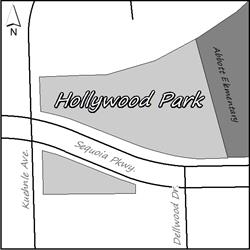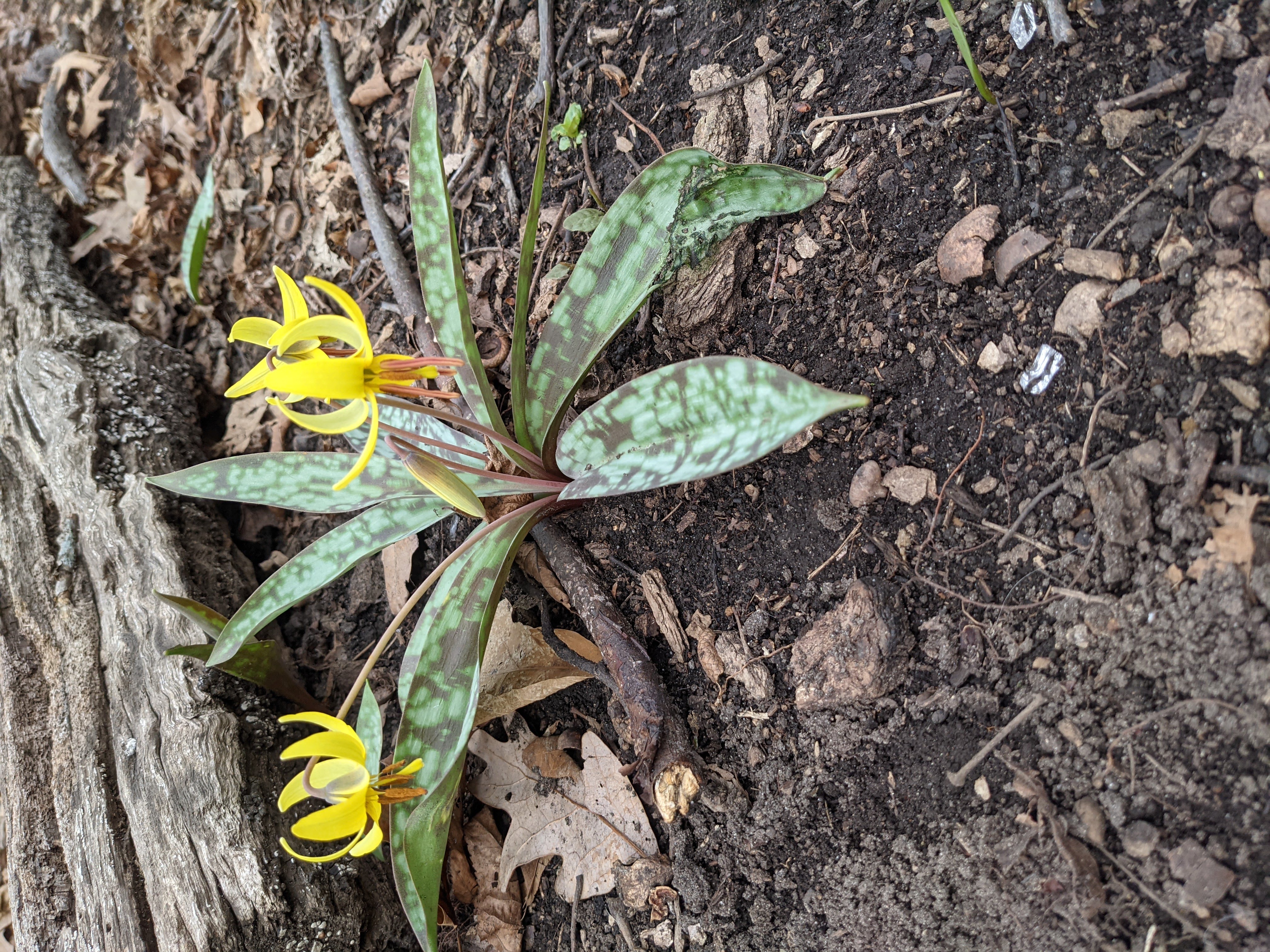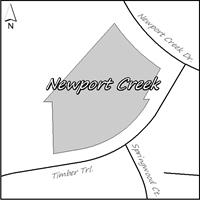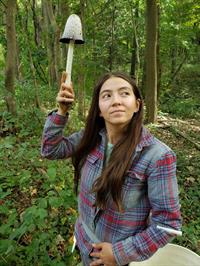Protecting and restoring Ann Arbor's natural areas and fostering an environmental ethic among its citizens
.
Volume 26, Number 2
Summer 2021
The “Buzz" About Cicadas
Becky Gajewski, Stewardship Specialist
.jpg?RenditionID=6) The word is out that the 17-year cicada emergence is happening this summer, and it is generating a lot of attention. Brood X (Roman numeral ten), is the group of cicadas that is expected to emerge in our area, sometime around late May or early June. This brood is mainly concentrated in states south and east of Michigan, but it also extends up a bit into the southern region of the state. Lots of questions surround this significant event, not the least of which is what could the effects of this emergence be?
The word is out that the 17-year cicada emergence is happening this summer, and it is generating a lot of attention. Brood X (Roman numeral ten), is the group of cicadas that is expected to emerge in our area, sometime around late May or early June. This brood is mainly concentrated in states south and east of Michigan, but it also extends up a bit into the southern region of the state. Lots of questions surround this significant event, not the least of which is what could the effects of this emergence be?
Cicadas are flying plant-sucking insects related to leafhoppers and treehoppers. They have large, squat bodies, wide-set eyes, short antennae, and long, clear wings. Cicadas also produce a loud, distinctive buzz to attract mates in the summertime. There are many species of cicadas in Michigan, most with 2-8 year lifecycles. They generally don't all emerge at once, and are referred to as “annual cicadas." The species that emerge in large groups together are called “periodical cicadas."
Periodical cicadas will stay underground for around 13-17 years. They usually emerge in late April to early June, when soil temperatures warm to 64 degrees. At emergence, they climb up the nearest woody vegetation, where they molt and become adults. As adults, they will use their sucking mouthparts to feed on fluids in the branches or twigs of trees and shrubs.
Females cut slits into twigs to lay their eggs, using a sharp knife-like ovipositor. Several weeks later, the young hatch and drop to the ground, then begin burrowing underground to start the cycle again. Adults will only live for a few weeks in total.
If a tree is subjected to substantial feeding and egg-laying by cicadas, this could cause “flagging," which is the death of individual twigs or branches where the cicadas were most active. Many people are nervous about this emergence, fearing that the cicadas could kill their trees. It is true that young, weak, and ornamental trees may be killed if they experience heavy flagging, but mature trees appear to be unaffected by even dense broods of cicadas. To be on the safe side, it is recommended that you not plant new, young trees during the spring or summer of an emergence year. For this reason, the City of Ann Arbor has elected to delay new tree plantings until the fall of 2021.
If you have young trees in your yard that you are worried may be damaged by the cicadas, you can drape your trees with netting, securing it to the trunk of the tree so cicadas can't crawl under it. The openings in the netting must be less than ½ inch wide. Bird netting or cheesecloth work well. However, it is recommended that before you put in the time and money to cover your trees, wait to see how many cicadas actually emerge in your area. Females won't begin laying eggs until at least a week after emerging, and they generally won't move more than a few hundred meters to lay their eggs.
It may seem counterintuitive, but cicadas can also be beneficial to trees. First, they assist in “pruning" the weak branches. When branches are killed by flagging, it encourages the tree to spend more resources on healthy branches, which then produce more seeds, which produce more trees. Cicadas also provide fertilizer to the trees after they die, drop to the ground, and decompose. The cicada emergence need not be looked at as a scary event. In fact, you can help researchers understand more about the distribution of cicadas by reporting emergences with an app on your smartphone! For more info, see cicadasafari.org.
Coordinator's Corner
Park Stewards
Long-time readers may remember that we updated NAP's mission way back in 2000. At the time, I had this to say about it:
I started thinking about it a few years ago when an old friend challenged me on the real benefit that NAP was contributing. To summarize his thoughts, he quoted Aldo Leopold from a letter Aldo had written to fellow-conservationist Doug Wade:
“Things that are done wholly by government are really not done, because any decent land use is worthwhile, not only for its effect on land, but for its effect on the owner. If the owner is an impersonal government, nobody is benefitted except the government employee."
Wow! That really hit me! And it helped me realize that even if NAP had lots of money to hire lots of staff to do all the ecological restoration work that needs to be done in all the parks, that would still not be enough. Sure, the parks would be ecologically healthier, and the staff who did the work would experience a closer kinship with the earth, but what about YOU, the public? Oh, many of you reading this would nod with approval at the work we had accomplished, but we would have robbed you of the much more satisfying experience to do some of your own personal restoration.
No, our real mission in NAP is much more than just restoring the land. It is to empower, encourage, train, and coordinate our citizens so they too can participate in this restoration. And in so doing, they can begin to develop, or continue to develop, their own connection to the land, their own environmental ethic.
With this new mission firmly in our sights, we set out to create a corps of Park Stewards, volunteers with a long-term commitment to a particular park, who can keep a closer eye on it than NAP can, and perhaps carry out restoration activities there more frequently than NAP would be able to do. Of course, some of these people already existed, and had been stewarding their local parks since long before NAP came along. So our initial task was simply to formalize their role with NAP, and make sure we were all on the same page about the work that needed to be done in that park. The goal has always been for NAP and the Steward to work hand-in-hand, each knowing what the other was doing in the park. NAP had to be ready to answer questions from the public about who was cutting shrubs in the park, and if they were authorized to do that.

Our corps of Park Stewards started off rather small, with only a half-dozen or so already dedicated volunteers. We've grown it over time, even designating a NAP staffer as “Park Steward Coordinator." And we've had success, as our current roster includes more than 80 Stewards! But more than high numbers, the Park Stewards recently reached a new milestone: they've started to self-organize. Although NAP has tried to encourage “Stewardship Teams" over the years, that idea never really took hold. That's not surprising. One of the great models that NAP tried to mimic is the Volunteer Stewardship Network that emerged in the Chicago area in the 1970s and '80s. But that was a grassroots effort, started without much assistance from the governing body. It's been a different challenge for us to “impose" such a program from the top-down.
So, it's with tremendous excitement that I see our Park Stewards beginning to organize themselves, create their own momentum, and build more camaraderie within their team. There will be new challenges as NAP and the Stewards navigate this changing relationship, but these are healthy challenges, and I look forward to working through them. So, if you've thought about stepping up to become a Park Steward yourself, now might be a good time to do that. You'll be joining a team of Stewards who can offer you lots of support in new ways that NAP alone never could.
-David Borneman, Natural Area Preservation Manager
Park Focus: Hollywood Park
Hannah Bradshaw, Outreach Assistant
 Located right next to Abbott Elementary on Sequoia Parkway, this small but mighty nature area has a lot to offer! At around 3 acres, this park contains lots of trails through the woods that can be accessed from the sidewalk along Sequoia Parkway or from Abbott's playground (should you feel the need to go down a slide before setting off into the woodland). About half of the forest at Hollywood Park is owned by the City, while the other half belongs to the school district; the dual management allows for a great collaboration between parks and school. The close proximity to nature means kids can explore a woodland before, during, and after school. The crisscrossing trails in Hollywood Park are almost whimsical—and I had a lot of fun exploring!
Located right next to Abbott Elementary on Sequoia Parkway, this small but mighty nature area has a lot to offer! At around 3 acres, this park contains lots of trails through the woods that can be accessed from the sidewalk along Sequoia Parkway or from Abbott's playground (should you feel the need to go down a slide before setting off into the woodland). About half of the forest at Hollywood Park is owned by the City, while the other half belongs to the school district; the dual management allows for a great collaboration between parks and school. The close proximity to nature means kids can explore a woodland before, during, and after school. The crisscrossing trails in Hollywood Park are almost whimsical—and I had a lot of fun exploring!
When I visited this spring, I was elated to find the woodland floor covered in yellow trout lilies,  Erythronium americanum. These native wildflowers can be identified by their six-petaled yellow flowers and their green leaves with purple to red splotches. The expansive open forest floor at Hollywood Park allows native wildflowers like this to blanket the understory. Large mature trees spread out to dot the overstory, while fallen trees make perfect habitat for all sorts of critters. NAP's restoration at Hollywood makes this possible. By removing invasive shrubs and herbaceous plants, native trees and flowers have more room to receive the sun's light and thrive. One tree of note in this park is shagbark hickory, Carya ovata. As the name suggests, its bark looks a bit shaggy, with large chunks looking as if they are peeling off. These trees grow large and can live for a couple hundred years! Even more native wildflowers will be blossoming soon, and Hollywood Park is a wonderful place to see them this summer!
Erythronium americanum. These native wildflowers can be identified by their six-petaled yellow flowers and their green leaves with purple to red splotches. The expansive open forest floor at Hollywood Park allows native wildflowers like this to blanket the understory. Large mature trees spread out to dot the overstory, while fallen trees make perfect habitat for all sorts of critters. NAP's restoration at Hollywood makes this possible. By removing invasive shrubs and herbaceous plants, native trees and flowers have more room to receive the sun's light and thrive. One tree of note in this park is shagbark hickory, Carya ovata. As the name suggests, its bark looks a bit shaggy, with large chunks looking as if they are peeling off. These trees grow large and can live for a couple hundred years! Even more native wildflowers will be blossoming soon, and Hollywood Park is a wonderful place to see them this summer!
Park Focus: Newport Creek Nature Area
Hannah Bradshaw, Outreach Assistant
Surrounded by houses, the dense woodland plot that is Newport Creek Nature Area sticks out. The small oasis was preserved when the Newport Creek subdivision was developed.
 This Nature Area is within walking distance to the much larger Bird Hills and Barton Nature Areas—but a natural area of any size is valuable to the many organisms depending on it for habitat. The trails here are narrow, but I was able to follow them to the creek and spot some white and yellow trout lilies who love the moist soils along the water. I also found mature hardwoods along the creek—which are surely home to birds, squirrels, and more!
This Nature Area is within walking distance to the much larger Bird Hills and Barton Nature Areas—but a natural area of any size is valuable to the many organisms depending on it for habitat. The trails here are narrow, but I was able to follow them to the creek and spot some white and yellow trout lilies who love the moist soils along the water. I also found mature hardwoods along the creek—which are surely home to birds, squirrels, and more!
NAP is working on ecologically restoring the park, as it is densely packed with shrubs—predominantly invasive Honeysuckle. Invasive plants or not, Newport Creek is a fun little place to explore!
Introducing: Volunteerhub
Starting in June 2021, all NAP volunteer opportunities will be available for registration through VolunteerHub.
Not just a replacement for Rec-1 VolunteerHub is a nearly global update of how NAP creates and manages volunteer events. NAP staff is looking forward to using this new tool to bring together several previously siloed or soon-to-be-outdated processes:
- publish volunteer events and opportunities
- register volunteers for events and programs
- check volunteers in and out at events
- keep volunteer contacts up-to-date
- input and track volunteer hours
- report on work done by volunteers
For all NAP volunteers: Visit the NAP VolunteerHub page, vhub.at/NAP, to create your account. The process takes just a couple of minutes; you'll be asked to :
Create a Username
- can be an email address
- special characters allowed: @ . — _
Create a Password
- at least 6 characters long
- one uppercase letter
- one lowercase letter
- one number
Create a Profile
- name
- email address
- date of birth
- emergency contact
Have questions? Run into issues?
Contact us: [email protected] or 734.794.6627.
Welcome, new Park Stewards!
Tiffany Ng
Kuebler Langford Nature Area
Thank you!
Many thanks to the groups who volunteered with NAP recently. We could not make such a difference without you!
A2 Area ZTA Alumnae
Ann Arbor Youth Volunteer Corps
EMU Diversiteam—Early College Alliance
Express Employment Professionals
Growing Hope
Michigan Running Club
REI Ann Arbor
St Paul Lutheran Church and School
UM Sustainable Living Experience
UM Tao Beta Pi
Staff Updates
Welcome…

Matthew Spoor
Park Steward Coordinator
Since moving to Ann Arbor in 2019, I have been in awe of what NAP provides for the citizens of this great city. Now, I get to be a part of this amazing team and could not be happier. I was born and raised in North Dakota, attended the University of North Dakota and worked in the renewable fuels industry for fifteen years. I am currently a student at Eastern Michigan University pursuing a mid-life degree in biology. I love birding, leading bird walks, removing invasive species from Ann Arbor nature areas, learning, teaching, and spending time with my kids.
 Brady Friss
Brady Friss
Conservation Worker
Hi all! I am a recent graduate of Michigan State University with a bachelor's degree in Fisheries and Wildlife. Within my degree I concentrated on Conservation Biology so I am extremely excited to join the conservation crew here at NAP. In my free time I enjoy getting out on the water for some fishing or wakeboarding, taking photos of wildlife, and really any activity that involves the outdoors. I am grateful to be joining such a wonderful organization and having the opportunity to continue learning about many aspects of natural resource management!
 Farewell…
Farewell…
Amy Lipson
Conservation Crew Leader
After more than 4 years working on the conservation crew at NAP, I am moving on to work at the Little Traverse Conservancy. While I will miss everyone here, I am excited to move up north and work as a Conservation Specialist. I owe the skills that prepared me to take this position to my time at NAP, and the support of the wonderful staff here. Thanks to all the co-workers and volunteers, past and present, that have made NAP a wonderful place to work!
Help us plan what's next for NAP News!
This edition is the last printed issue of the NAP newsletter, and we want your input on the next iteration of NAP news! Let us know your preferences by filling out the form at tinyurl.com/NAPEmailNews, or feel free to share your thoughts in an email to [email protected].
We're hoping to find out the what/when/how of what our readers want—your input is valuable to us!
